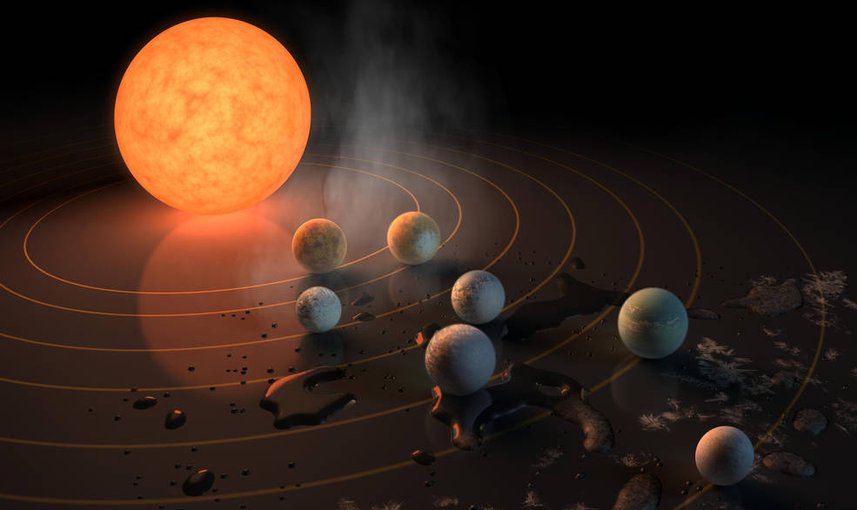
March 2, 2017
Feature Story
It Takes a Village to Model a Planet

The Virtual Planetary Laboratory investigates the potential habitability of extrasolar planets. The research will help in predicting the habitability of discovered bodies like the Earth-size planets orbiting TRAPPIST-1. Image source: NASA
With the exciting recent discoveries of planets orbiting TRAPPIST-1 and Proxima Centauri, interest in exoplanets is on the rise, and the Virtual Planetary Laboratory (VPL), the NASA Astrobiology Institute team based at the University of Washington, is poised to help the science community better predict which exoplanets might be able to support life and serve as ideal targets for future missions.
VPL studies what factors affect habitability and what observable characteristics of a planet point to signs of life (and what might also misdirect us) using field and lab experiments and computational models. An article published at Now.space discusses the many data sets incorporated into VPL’s planet modeling, for rocky planets orbiting a red dwarf star to different phases of early Earth. The process calls upon the expertise of chemists, microbiologists, geologists, oceanographers, atmospheric scientists, and astronomers to name a few. As summed up by PI Victoria Meadow’s catchphrase: “It takes a village to model a planet.”
More information about VPL is available at their website at https://depts.washington.edu/naivpl/content/welcome-virtual-planetary-laboratory.